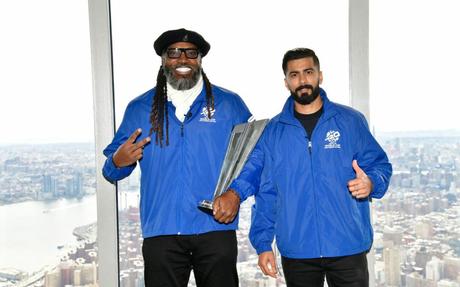
On Monday something unexpected happened in downtown Manhattan. The Empire State Building, so long the architectural symbol of American life, was lit in blue and red, the colors of the International Cricket Council. Chris Gayle, the former West Indies international, a cricketer known for his six-hitting skills, flipped the switch to turn on the lights.
"The Big Apple, take a bite," Gayle said The Telegraph of his involvement. 'Cricket is coming. America, are you ready?
While this seems the most unlikely bit of sports evangelism, the equivalent of Extinction Rebellion trying to sign up the BP board as new members, Gayle is not entirely fanciful in his claim that the US is cricket's new frontier. The light show in New York was to celebrate India playing Pakistan in a T20 World Cup match on June 9 at a new cricket stadium built in the city. All 34,000 tickets for the match have long since been sold. And that could be just the beginning.
"The appetite is certainly there," says Liam Plunkett, the former England international who now lives in Philadelphia with his American wife. "More kids in Houston play cricket than baseball. Every weekend I can watch a hundred cricket matches in my area. Academies are popping up left, right and center.
"Even if they don't play themselves, every American I know will have seen a game at their local park. It's here."
That's certainly true: the former Texas AirHogs baseball stadium in Grande Prairie was redeveloped into a Major League Cricket (MLC) stadium in 2021 and will serve as the base for the U.S. national teams.
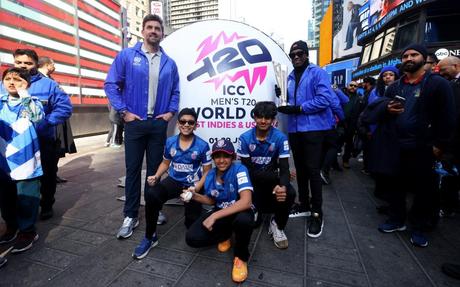
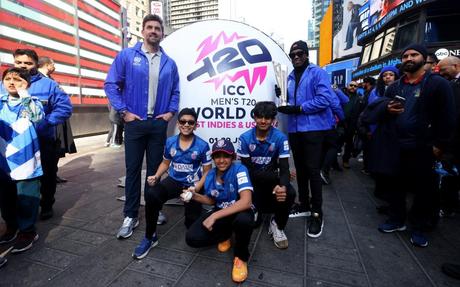
In the past, even two decades ago, the very idea of cricket entering the American sporting landscape would have been considered fanciful. After all, this was a sport that was long dismissed there as an adjunct to British colonialism.
In Victorian times, when games were first codified, it was a point of cultural pride in the US not to embrace the pursuits of the former imperial master. Gridiron was invented as a local version of rugby and football. And baseball was the preference of all Americans over cricket. No matter that the rest of the world embraced the British models, in the US the future lay in homegrown offshoots. Cricket in particular was derided as a weird British obsession, a manifestation of the class system, competing for days on end, often without a proper conclusion. If it was even thought about.
The story continues
But times - and more specifically, demographics - are changing. While America may have scoffed, in other parts of the empire cricket was happily absorbed. On the Indian subcontinent it grew into a national obsession. The Indian Premier League (IPL), the annual two-month competition involving all the world's best players, has become one of the most commercially lucrative sports franchises in the world. And in the same way that British travelers took their sport with them around the world in the 19th century, the South Asian diaspora has lately brought their love of the game with them as they took positions in American medical and engineering companies. Hundreds of thousands of Indians, Pakistanis, Sri Lankans and Bangladeshis have arrived in the US recently, carrying bats under their arms.
One of them is Ali Khan. When he was 19, his family moved from Pakistan to Dayton, Ohio, where his uncle worked in IT. He was a more than useful player in his teens and believes his entire childhood consisted of playing the game on the streets of Attock in the Punjab. That was no longer possible, he thought, now that he had moved to the US.
"My cricketing dreams were pretty much over," he recalls. "I arrived thinking there was no way anyone would play in America. I soon found out how wrong I was."
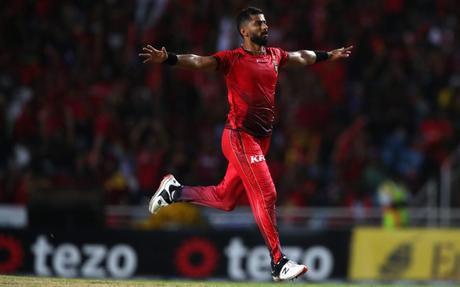
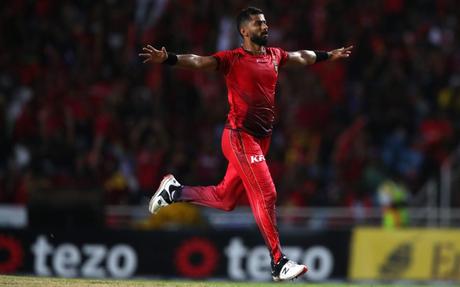
Within days of his arrival, his uncle had told him about the Dayton cricket club. This was a social collective formed largely as an opportunity for South Asians to come together and forge bonds, a touch of home in a foreign land. Khan came along for a test and scared everyone there with the pace of his bowling. A few months later he saw on Facebook that a tournament was being organized in Florida. He got himself an invitation and took four wickets in the quarter-final. In 2015, he was picked to play in competitions in the Caribbean and the following year he made his debut for the US cricket team.
"It was made up of expats," he says of the national team, where he played against countries such as Oman, Canada and the UAE. "Mainly Indians, but also others from the Caribbean, Pakistan and Sri Lanka. Plus a few players who were born here, children of immigrants who inherited the love of the game from their parents."
Today, Khan is a full-time professional cricketer and plays in T20 leagues around the world. He became the first US international to be bought by an IPL franchise. Last summer he played in the debut season of MLC, the new American league designed to copy the IPL methodology. Loud, brash, colorful and above all fast; its purpose eliminates many of the prejudices that the American sporting public harbors about cricket.
"We played every game in front of packed houses," says Khan, who now lives in Houston, which has become the epicenter of the American game. "What I've noticed lately is that when I told people I played cricket, they said, 'What is that?' Now [when] When I say I play cricket, they say, 'Oh, nice.' I say, 'How do you know?' They say they saw it on social media. Sometimes it appears on your screen even when you are not interested.
When the game is played by a community that supports the US IT business, the game's social media presence is almost as loud as an IPL team jersey. And with that growing awareness have also come financial investments. Last year's MLC was played in two centers: Dallas and Morrisville, North Carolina. This year's edition will be played in six purpose-built stadiums across the country, including the New York venue that will host the T20 World Cup match. And then there are the 2028 Olympic Games in Los Angeles, which will include cricket for the first time. An American team will participate, just like they do in the upcoming T20 World Cup.
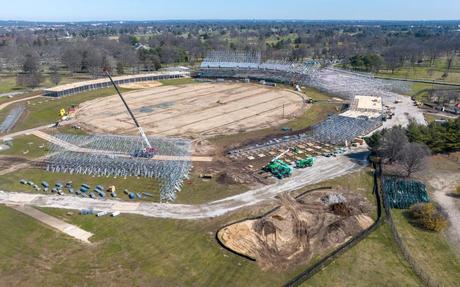
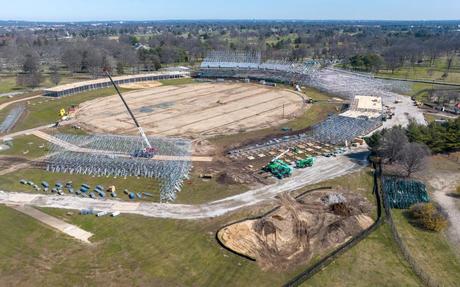
"I think these tournaments will mean something for cricket [the USA hosting] the World Cup in the 90s did that," said Plunkett, who has signed up to play in the MLC in July. "These days you come into Philly and you see more football fields than American football or baseball. I think that's how cricket could develop.
"Locally, I don't think people realize how big cricket is. I tell them if you have one of the greatest athletes in America next to Virat Kohli [the Indian team captain]would there be a bigger queue for Virat Kohli.
Not that everyone is enchanted by the rapid growth of the immigrant game. In 2009, in Loudoun County, Virginia, a semi-rural suburb south of Washington, there were only five teams playing cricket in the area. Now, with the huge influx of South Asians recruited into local tech companies, there are 60 clubs and more than 3,000 players. With only five pitches in the county, the local league was granted planning permission to build a number of wickets, training space and associated parking on the site of a poorly used baseball facility at Mickie Gordon Park. But the thing is, the park is named after a pioneering coach in a local informal black baseball league. Through online petitions, lawn posters and noisy community meetings, local residents are objecting to the new use of the site because they do not want its heritage to be damaged.
"It's not fair to our community to completely change the nature, character and amenities that are here," Bridge Lyttleton, the local mayor, told the newspaper. Washingtonian.
This is a culture war being fought around a set of three wooden stumps. But it is a war where it seems there will only be one winner.
"In development terms, we are still at ground zero," says Plunkett. 'But everything goes so fast. We bring the game to schools. And once it's here, once kids and their parents see a pipeline to a real professional sport, there's no stopping it. Cricket is the future."
